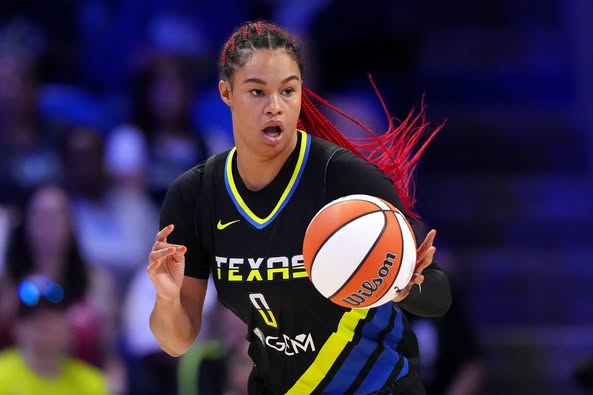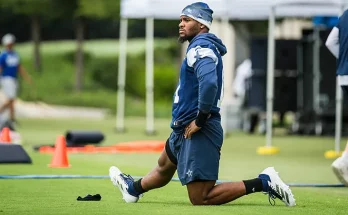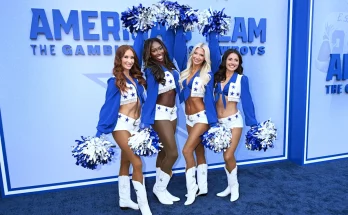Satou Sabally, the dynamic forward who blossomed into a WNBA star in Dallas, is ready to turn the page on her time with the Wings. As ESPN’s Alexa Philippou first broke on X, the Wings applied their core player designation to Sabally—a move that foregrounds her departure—just ahead of her final game in Dallas (swishappeal.com, twitter.com). That beautifully phrased “I’ve already played my last game in Dallas” signaled the start of a sequence that reshaped not just her career but also the rosters of multiple teams.
This core designation, under WNBA rules, allows a team to offer a one‑year max contract—around $249,244 under the current collective bargaining agreement—then either retain the player or trade her rather than letting her depart with no returns (mavsmoneyball.com, sportskeeda.com). It’s a strategic safeguard that ensures Dallas wouldn’t lose their Unicorn without something in return. Sabally had earned the right to unrestricted free agency for the first time, but her departure wasn’t a lone act—it was a dance with negotiation, timing, agency, and vision.
Dallas and Sabally coordinated seamlessly. She announced at an Unrivaled 3×3 press conference that she was entering free agency with a clear signal: “I’ve already communicated with Dallas how grateful I am… I’ve played my last game in Dallas.” (mavsmoneyball.com). For Dallas, her choice unleashed the ability to retool the roster with meaningful assets, while for Sabally, it opened a path toward joining a team destined for contention.
Just weeks later, the dominoes fell. In a blockbuster three-team trade involving Dallas, Phoenix, and Indiana, Sabally was moved to the Phoenix Mercury, headlining a deal that brought Kalani Brown and Sevgi Uzun alongside her (swishappeal.com). The Wings received guard Ty Harris, forward NaLyssa Smith from Indiana, and retained the No. 8 overall pick in the 2025 WNBA Draft (swishappeal.com). Meanwhile, Indiana used Phoenix’s draft asset to acquire Sophie Cunningham.
This trade was more than a log‑jam clearance—Phoenix netted another star to complement its emerging Big Three. Sabally joins Alyssa Thomas and Kahleah Cooper, reshaping the Mercury’s top line into a force to be reckoned with (swishappeal.com). Phoenix clearly aimed to elevate its ceiling, banking on her unicorn versatility—her ability to stretch the floor, play off the dribble, facilitate—all attributes that matched coach Nate Tibbetts’ system.
From Dallas’s side, the return wasn’t trivial: Ty Harris’s floor‑spacing and defensive poise, NaLyssa Smith’s size and talent in the frontcourt, plus a lottery pick to aid rebuilding—especially alluring given Dallas owns the No. 1 overall pick—offers flexibility (swishappeal.com, mavsmoneyball.com). And crucially, offloading Brown’s salary gives key breathing room under the cap for future roster decisions (mavsmoneyball.com).
Sabally’s personal arc in Dallas is a tale of progression: the No. 2 overall pick in 2020, she earned the WNBA’s Most Improved Player award and All‑WNBA First Team honors in 2023. Yet durability problems—averaging under 20 games per season—limited her impact. Still, her 2023 breakout reflected her potential: over 18 points, eight rebounds, 4.4 assists per game (espn.com). She blossomed physically and mentally, earning trust not just from fans but also from her organization, culminating in her signing that one-year deal in early 2024 for $195,000—below the available max—demonstrating her commitment to a shared vision in Dallas (espn.com).
Yet following surgery and lineup shifts, the Wings slipped to an 11–31 record in 2024 . Sabally’s ambition to compete for a title cleaved against Dallas’s rebuilding momentum. For Sabally, the timing was right: she remains at peak athleticism at 26 years old, primed for big minutes on a championship trajectory.
The financial calculus is sharp as well. The $249,244 core offer is the maximum for a player outside the super‑max threshold, a significant raise from her 2024 deal (sportskeeda.com). That jump signals just how much Phoenix valued her alongside Thomas and Cooper, adding elite versatility to their perimeter lineup.
Phoenix’s gambit is bold. They secured a proven star without surrendering draft capital or younger developmental players. They’re betting that Sabally’s dual‑threat as scorer and facilitator can shift their season into another gear. In her debut season, she opened with 27 points in a Mercury win over Seattle—a statement that she’s ready for the spotlight (swishappeal.com, en.wikipedia.org).
Dallas, meanwhile, pivoted cleanly. Ty Harris averaged near 42% from deep in Connecticut and brings proven spacing; NaLyssa Smith is a high-upside forward with solid rookie foundation; and the No. 8 pick gives the Wings flexibility amid a stacked draft (mavsmoneyball.com). With draft capital headed toward Chicago, Indiana, and Phoenix, this will be a WNBA Draft where Dallas could reshape its identity from youth movement to balanced contender.
This isn’t just a trade—it’s a reset. Phoenix pulls the lever for a contender, Dallas trades star power for depth and flexibility, and Sabally steps into a championship setting. It’s emblematic of modern WNBA moves: ambitious risk-taking, cap awareness, and respect for player agency.
As we trace the arc from her draft in 2020 through her breakout and now to her relocation, Sabally’s path reflects both her individual growth and the league’s young maturation. No longer a lightning rod for untapped potential, she is now fully realized and valued, validated by massive interest from teams like Indiana and New York before opting for the highest bidder and best fit .
That level of demand, plus a league‑max check, underscores how much she’s ascended. She is Gall’s Unicorn in the truest sense—versatile, valuable, coveted. For Phoenix’s future, she is a new axis of offense and a fresh emotional draw for fans. For Dallas, she is both a successful legacy and the detonator for next chapter.
Satou’s measured statements about gratitude and readiness—the graceful exit speech—underscores her maturity. Dallas will always have her first five seasons imprinted. In return, Phoenix and Dallas each received pieces that reflect ambition: Phoenix leaning into stars, Dallas refocusing on mixed assets and future flexibility.
The context is compelling: a 26‑year‑old star electing to walk away, a team employing its core right to convert potential into value, and two franchises reshaping visions based on one elite talent. That speaks volumes about how far the WNBA has come—from soft salary structure to tangible strategic flexibility. It also gestures to Sabally’s place in rising parity: she could have taken a different route yet chose the most competitive one.
As for the upcoming season, eyes will track Sabally’s chemistry with Thomas and Copper in Phoenix. Dallas will be scrutinized for Ty Harris’s fit alongside Ogunbowale and the rookie pickups. The ripple effects run deeper—Indiana added Cunningham, too—so this one move reorders depth of rosters, playoff hopes, and branding trajectories.
In sum, Satou Sabally’s $249,244 core‑offer acceptance and orchestrated move marks a career‑defining moment. It’s the end of her Wings era, but the beginning of something bigger—for Sabally, for Phoenix’s title chances, and for a Dallas team ready for reimagination. There’s resonance in her exit line: “I’ve played my last game in Dallas.” It was more than a statement—it was the overture of a grander narrative, a pivot on which several franchise trajectories hinge.
Looking ahead, expect Phoenix to roll out their new core with aggressive pace and swagger. Dallas, with a salad bowl of young pieces, will be building patience and flexibility toward future contention. And Sabally? She stands at the center of it all, fully acknowledged as a Unicorn worth trading everything fo



